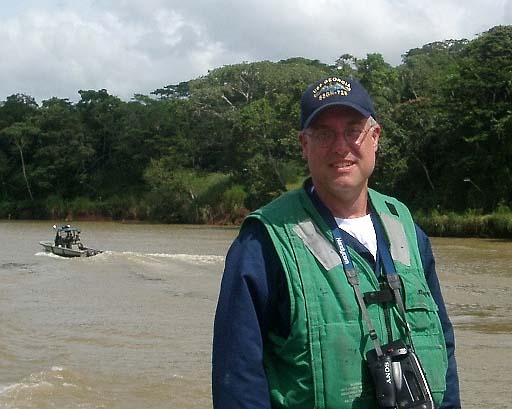Verny Park is named for Léonce Verny. The memorial plaque to Mr. Verny reads;
Verny, a French naval engineer, came to Japan in 1865 to take charge of the Yokosuka Arsenal construction at the request of the Tokugawa Bakufu government whose aim was to strengthen the country's naval forces. His duties as administrator and constructor extended beyond the Bakufu government into the Meiji Reformation with the construction of the Kannonzaki Lighthouse, the Hashirimizu waterway, and the development of brick production. He also established a technical school inside the arsenal where he worked at training Japanese technicians before returning to his home country in 1876.
 |
| Léonce Verny |
 |
| A part of Verny Park as seen from Liberty Cove Apartments with the Naval Base on the other side of Yokosuka Bay. |
In good weather during the spring and summer the park is full of people taking pictures of roses. While I was taking the photographs for this post I was surrounded by many Japanese people doing the same.
 |
| A row of standing cages for climbing roses. |
Verny Park has a number of places for people to gather. A popular place to take pictures is near a dome surrounded by deep red roses. While I was there a group of elderly people and their family members came to take pictures in a spot made for that purpose.
Now, more roses. Many of them are planted in beds with placards saying what hybrid of rose they are and when they were hybridized. Where I have that information I put it in the captions.
 |
| Blue Light 1995 |
 |
| Princess Michiko 1966 - The year she became Princess by marrying Emperor (then prince) Akihito |
There are very many more. An entire book could be written about all of the rose hybrids that are grown in Verny Park. There are a couple of other things as well. There is a museum commemorating Léonce Verny, a cafe, and a 16 inch gun barrel salvaged from the battleship Mutsu. Perhaps I'll include those in a later post.
For now, one more commemoration, for Tadamasa Oguri (in Japanese surnames come first, so Oguri Tadamasa).
 |
| Oguri Tadamasa 1827 - 1868 |
The memorial plaque to Mr. Oguri reads;
Holding successive official posts as Magistrate of Finance and Magistrate of Diplomacy in the closing days of the Tokugawa Bakufu government, Oguri served as part of Japan's first delegation to the United States, and with the support of France promoted construction of the Yokosuka Arsenal. He also contributed greatly to Japan's modernization through the reformation of the military system, while also establishing a French language school. After the restoration of Imperial rule, Oguri was dismissed from his post for advocating armed resistance and was eventually beheaded by the Imperial Army in his territory at Gonda Village, now Kurabuchi Village, Gunma Prefecture.
Stones from the riverbank where he was beheaded were brought to the Park and are arranged near Mr. Oguri's statue.
A last photograph that combines roses with the Japanese Maritime Self-Defense Force (Navy).
じゃあね








































